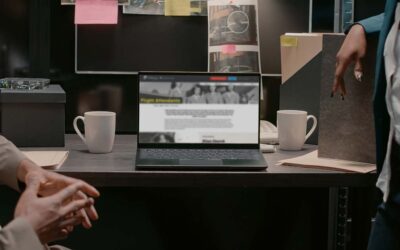Museum Challenges and How a CMS Can Help – Part 1

Rachael Cristine Woody
There will always be challenges in the museum industry; some are perennial while others are solved or evolve over time. During the 2019 conference season I’ve delivered and attended several panel sessions where professionals in the field review our challenges and posit solutions. However, as I reflect on my conference experiences, I note there is one museum element that has been conspicuously absent from our solutions: the museum collections management system.
Reviewing challenges and solutions is an incredibly helpful practice and arguably one of the top reasons museum professionals attend conferences—to learn about solutions they can take back and apply to their museum.
In Part 1 of this series I will review the first two of the top four museum challenges—and discuss how the museum collections management system (CMS) can help us overcome them. Those challenges are: past practices, funding, DEAI, and the digital visitor.
Challenge: Past Practices
Failing to adequately address problematic museum past practices is increasingly becoming untenable within the field. Many museums, especially those established in the 20th-century and earlier, have at least a few collection skeletons (sometimes literally) in their closet. Bad past practices include:
- Collecting objects with sketchy, falsified, or unknown provenance
- Perpetuating harm by retaining custody of culturally sacred objects or human remains
- Presenting a monochromatic or whitewashed history
These issues are systemic and therefore it will take a multi-pronged approach over a period of time to address each one. However, that doesn’t mean we as museum professionals can’t begin to rectify some of these past practice issues.
Here’s how the CMS can help:
A museum collections management system (CMS) can be the first step in any museum solution as it can easily offer collection transparency. Here are the potential solutions a CMS offers:
- A CMS can capture and display the provenance of objects and allow space for a narrative on why there may be issues inherent to the museum owning the item. Acknowledging there is a problem is the first step and providing transparent accountability to the public is key in order to rectify this issue.
- For museum items that need to be returned to an originating community (such as sacred objects) there may be a solution that allows for digital access to the sacred object. If the community grants permission, a museum CMS can display the digital surrogate of the object so that all may enjoy and learn from interacting with that object even when the physical object has been returned.
- The CMS offers a significant amount of space where a more in-depth and inclusive history can be published – adjusting the predominantly white, male, colonizer historical accounts. Using the CMS to connect related objects and deliver a more inclusive narrative via a digital exhibit will help to correct the current one-sided understanding of historical accounts. This action can be done more readily and fairly inexpensively due to its digital nature as opposed to changing a gallery exhibit, which requires a larger budget.
Challenge: Funding
Funding is a perennial issue that remains even as our approach to museum infrastructure changes. Funding is an issue no matter how large or small you are—it’s all relative. One component of the museum funding challenge is that there aren’t many streams of income. (To read more on how a museum’s online presence is critical to its income stream please see this post). This generates even more pressure to keep the few that exist as healthy as possible. When grant funding and donors are involved a museum needs to meet and exceed their expectations. In order to do that, museums need to understand what those expectations are. Granting agencies and donors want two the museum to demonstrate two things:
- That the money has obviously produced a thing of quality; and
- That the produced thing can be easily shared in order to benefit the greatest amount of people.
Here’s how the CMS can help:
A museum collections management system (CMS) can assist in demonstrating the above requirements in addition to supporting a variety of more specific project outcomes. I encourage museum staff to think creatively about how they can additionally leverage the CMS to deliver “more bang for the buck” on externally funded projects. Here are two examples:
- Publish digital evidence of the funded project via the CMS and be sure to include a sponsorship note on the landing page and for each appropriate collection record.
- Make sure that content sharing buttons are available throughout your CMS and share links to areas within the CMS via the museum social media channels. Please read Museum Social Media and the Museum Collection Management System for more inspiration on how to leverage the museum CMS on social media.
Tune in next week to read Museum Challenges and How a CMS Can Help – Part 2.

Rachael Cristine Woody
Consultant, author, and blogger Rachael Cristine Woody advises on museum strategies, collections management and grant writing for a wide variety of clients. Learn about Lucidea’s Argus solution for museum collections management and digitization, which can be used to support a wide variety of museum strategies.
Similar Posts
An Introduction to Scrollytelling for Museums
Discover how museums use scrollytelling and digital storytelling platforms to create immersive narratives. This introduction explores key concepts and approaches to interactive storytelling.
Exploring Self-Determinate Multiple Pathways: An Example of Digital Storytelling
Discover how self-determinate multiple pathways offer flexible interactive storytelling in museum exhibits. Learn from the Tenement Museum’s ‘Your Story Our Story.’
Digital Museum Storytelling Example: A Look at Self-Determinate Linear Pathways
Self-determinate characteristics on a linear pathway go beyond brief sidebar topics and instead offer alternative ways to navigate the linear pathway.
Digital Storytelling in Museums: The Prescriptive Linear Pathway in Action
Rachael Woody emphasizes that storytelling is key to engaging audiences with collections. One effective approach? The prescriptive linear pathway—a simple yet powerful method for guiding visitors through digital exhibits.






Leave a Comment
Comments are reviewed and must adhere to our comments policy.
0 Comments